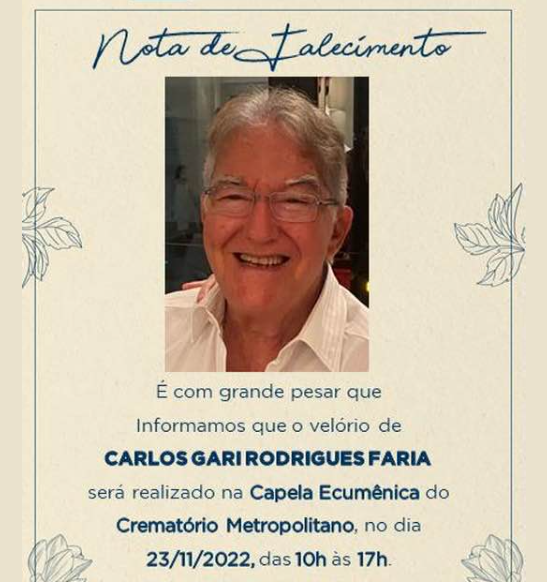3.112 AMICOR (25)
#Dra. Valderês Antonietta Robinson Achutti (*13/06/1931+15/06/2021)
Duas Leoas no jardim: uma de cerâmica e a outra de verdade...Aceguá (UR) Los Alamos (mar/2009)
#National Geographic
(ESA/Gaia/DPAC, CC BY-SA 3.0) |
The puzzling finding could support a controversial idea that does away entirely with dark matter.
#Nature
How many yottabytes in a quettabyte? Extreme numbers get new names

The vast amount of data created annually has led to the need for new words to describe huge numbers.Credit: Getty
By the 2030s, the world will generate around a yottabyte of data per year — that’s 1024 bytes, or the amount that would fit on DVDs stacked all the way to Mars. Now, the booming growth of the data sphere has prompted the governors of the metric system to agree on new prefixes beyond that magnitude, to describe the outrageously big and small.
Representatives from governments worldwide, meeting at the General Conference on Weights and Measures (CGPM) outside Paris on 18 November, voted to introduce four new prefixes to the International System of Units (SI) with immediate effect. The prefixes ronna and quetta represent 1027 and 1030, and ronto and quecto signify 10−27 and 10−30. Earth weighs around one ronnagram, and an electron’s mass is about one quectogram.
This is the first update to the prefix system since 1991, when the organization added zetta (1021), zepto (10−21), yotta (1024) and yocto (10−24). In that case, metrologists were adapting to fit the needs of chemists, who wanted a way to express SI units on the scale of Avogadro’s number — the 6 × 1023 units in a mole, a measure of the quantity of substances. The more familiar prefixes peta and exa were added in 1975 (see ‘Extreme figures’).
Extreme figures
Advances in scientific fields have led to increasing need for prefixes to describe very large and very small numbers.
Factor | Name | Symbol | Adopted |
|---|---|---|---|
1030 | quetta | Q | 2022 |
1027 | ronna | R | 2022 |
1024 | yotta | Y | 1991 |
1021 | zetta | Z | 1991 |
1018 | exa | E | 1975 |
1015 | peta | P | 1975 |
10−15 | femto | f | 1964 |
10−18 | atto | a | 1964 |
10−21 | zepto | z | 1991 |
10−24 | yocto | y | 1991 |
10−27 | ronto | r | 2022 |
10−30 | quecto | q | 2022 |
Today, the driver is data science, says Richard Brown, a metrologist at the UK National Physical Laboratory in Teddington. He has been working on plans to introduce the latest prefixes for five years, and presented the proposal to the CGPM on 17 November. With the annual volume of data generated globally having already hit zettabytes, informal suggestions for 1027 — including ‘hella’ and ‘bronto’ — were starting to take hold, he says. Google’s unit converter, for example, already tells users that 1,000 yottabytes is 1 hellabyte, and at least one UK government website quotes brontobyte as the correct term.
“From a metrology point of view, this sort of horrified me, because these are completely unofficial terms,” says Brown. In the past, unofficial terms have been adopted into the SI, he says. But the problem with hella and bronto is that their symbols (h and b) are already used in the metric system for other units or prefixes: h, for example, stands for hecto (the rarely used 102) and H is the henry, the unit of inductance. This is the main reason they can’t stand as formal terms, he says. “It’s not especially that I wanted to be a killjoy, although that comes into it as well,” he adds, smiling.
Prefix precedents
Coming up with the new prefixes was not straightforward. Brown looked for words that began with the only letters not already in use as symbols for units or prefixes, or otherwise excluded — r and R, and q and Q. The names came from sticking to precedents introduced for the most recently added prefixes. For example, those that multiply figures, such as giga, end in ‘a’, whereas prefixes describing the smaller end of the scale, such as atto, end in ‘o’. Another was that the words should roughly correspond with the sounds of Greek or Latin numbers (ronna and quetta sound a bit like the Greek words for nine and ten, ennea and deka). Brown was forced to ditch an earlier suggestion of ‘quecca’ after discovering its proximity to a Portuguese swear word.
The resulting prefixes are “very thoughtful” and the result of years of discussions, says Georgette Macdonald, director-general of Canada’s Metrology Research Centre in Halifax. Crucially, they fulfil metrologists’ desire for consistency and they avoid confusion, she says.
The SI currently only really needs new prefixes for large numbers, she adds, but introducing corresponding terms for the small end of the scale makes sense. “We’re not really sure that we’re measuring anything at that scale. But it is better to have the scale balanced and the prefixes relate to each other in some way that is consistent,” she says.
Ronna and quetta might sound strange now, but so did giga and tera once, says Olivier Pellegrino, a metrologist at the Portuguese Institute of Quality in Caparica, Portugal. With practice, they will feel normal, he says.
Brown says that there are now no letters of the alphabet available to represent new prefixes, so what will happen once some area of science pushes magnitudes to the 1033 level remains an open question. Scientists can always denote numbers in powers of ten, but people tend to want a word, says Brown. He would advocate compound prefixes that use two symbols, such as kiloquetta (kQ), rather than branching out into different alphabets. “But I think probably we’re a long way away from having to worry about this,” he adds.
Brown has had to jump through so many hoops to get his proposal approved at the CPGM that he hasn’t yet let himself imagine the terms actually in use, he says. “It will be absolutely fantastic.”
doi: https://doi.org/10.1038/d41586-022-03747-9
Com 20 anos ou mais de casa, éramos 353. Agradecendo à Direção, eu (com 62) disse ao Superintendente Dr. Luiz Antônio Nasi :
Quando o Hospital se regozija com seus médicos, nós também agradecemos por poder estar usufruindo de uma instituição que nos dá as melhores condições de trabalho, e de atendimento de nossos clientes. Sem falar das condições materiais e tecnológicas, a organização dos recursos, e o cultivo de um clima de harmonia, cooperação e crescimento, envolvendo não somente médicos mas todos os profissionais da saúde, e pessoas necessárias para manter em funcionamento uma organização tão complexa como é um hospital.
Recordando nossa história, lembrei de tantos colegas que não estão mais conosco, mas que fizeram parte dela, e contribuíram para que ela tivesse um curso tão feliz. Não posso deixar de chamar e compartilhar com tantos ausentes, entre os quais encontro a Dra. Valderês Antonietta Robinson Achutti, minha saudosa esposa, também credenciada, e com quem reparti sempre as responsabilidades de minha atividade profissional. Conforme já tive oportunidade de contar, se não fosse ela, eu nem seria médico, pois em 1951, quando ela apareceu em Santa Maria - e na minha vida -, eu estava me preparando para o vestibular de engenharia, e mudei de rumo quando ela me disse que desde o terceiro ano do curso ginasial havia decidido ser médica, e queria ser dona de um hospital. Ficamos setenta anos juntos, e ela também ficou “dona” do Hospital Moinhos de Vento, assim como eu.
Quem sabe, numa próxima oportunidade, possamos festejar, contando com todos os jubilados, cuja história terminou antes de nossa festa, - não puderam comparecer - mas sem os quais não estaríamos tão felizes…
| |||||||||
|
| |||||||||||||||||||
| |||||||||||||||||||
|
|
















